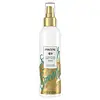What's inside
What's inside
 Benefits
Benefits

 Concerns
Concerns

No concerns
 Ingredients Side-by-side
Ingredients Side-by-side

Water
Skin ConditioningDimethicone
EmollientCetyl Alcohol
EmollientStearamidopropyl Dimethylamine
EmulsifyingStearyl Alcohol
EmollientQuaternium-18
Hydroxyethylcellulose
Emulsion StabilisingBenzyl Alcohol
PerfumingSorbitan Caprylate
EmulsifyingPEG-2m
Emulsion StabilisingParfum
MaskingCetearyl Alcohol
EmollientCitric Acid
BufferingOleyl Alcohol
EmollientGlyceryl Stearate
EmollientPolysorbate 60
EmulsifyingLysine Hcl
Skin ConditioningEDTA
Panthenol
Skin ConditioningPanthenyl Ethyl Ether
Histidine
HumectantWater, Dimethicone, Cetyl Alcohol, Stearamidopropyl Dimethylamine, Stearyl Alcohol, Quaternium-18, Hydroxyethylcellulose, Benzyl Alcohol, Sorbitan Caprylate, PEG-2m, Parfum, Cetearyl Alcohol, Citric Acid, Oleyl Alcohol, Glyceryl Stearate, Polysorbate 60, Lysine Hcl, EDTA, Panthenol, Panthenyl Ethyl Ether, Histidine
Water
Skin ConditioningDipropylene Glycol
HumectantPolysilicone-29
Silicone Quaternium-18
EmollientGlycerin
HumectantTrideceth-6
EmulsifyingChamomilla Recutita Flower Extract
MaskingCalendula Officinalis Flower Extract
MaskingPotassium Sorbate
PreservativePhenoxyethanol
PreservativeTrideceth-12
EmulsifyingSodium Benzoate
MaskingChlorphenesin
AntimicrobialPotassium Benzoate
PreservativeDisodium EDTA
Citric Acid
Buffering
 Reviews
Reviews

Ingredients Explained
These ingredients are found in both products.
Ingredients higher up in an ingredient list are typically present in a larger amount.
Citric Acid is an alpha hydroxy acid (AHA) naturally found in citrus fruits like oranges, lemons, and limes.
Like other AHAs, citric acid can exfoliate skin by breaking down the bonds that hold dead skin cells together. This helps reveal smoother and brighter skin underneath.
However, this exfoliating effect only happens at high concentrations (20%) which can be hard to find in cosmetic products.
Due to this, citric acid is usually included in small amounts as a pH adjuster. This helps keep products slightly more acidic and compatible with skin's natural pH.
In skincare formulas, citric acid can:
While it can provide some skin benefits, research shows lactic acid and glycolic acid are generally more effective and less irritating exfoliants.
Most citric acid used in skincare today is made by fermenting sugars (usually from molasses). This synthetic version is identical to the natural citrus form but easier to stabilize and use in formulations.
Read more about some other popular AHA's here:
Learn more about Citric AcidWater. It's the most common cosmetic ingredient of all. You'll usually see it at the top of ingredient lists, meaning that it makes up the largest part of the product.
So why is it so popular? Water most often acts as a solvent - this means that it helps dissolve other ingredients into the formulation.
You'll also recognize water as that liquid we all need to stay alive. If you see this, drink a glass of water. Stay hydrated!
Learn more about Water